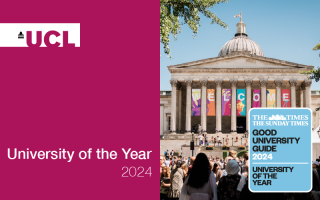Supervisor: Professor Juan Pedro Martinez-Barbera
Functional dissection of the role of senescence in tumour micro-environment and tumour compartment in paediatric diffuse midline gliomas
Background:
Paediatric brain tumours are the most common cause of cancer-related death in children and young adults. In particular, diffuse intrinsic pontine glioma (DIPG) is a devastating tumour with an overall survival of just 9 months post-diagnosis. There are no efficacious treatments, only radiotherapy (RT), but this is just palliative and tumours universally recur after a period of stable disease of 3-6 months post RT. There is a clinical need to develop better treatments against these tumours (PMID: 27282398).
Although RT is a common treatment against cancer, its mechanism of action is non-specific and leads to DNA damage of both cancer as well as normal, non-tumoural cells in the tumour microenvironment (TME). DNA damage can lead to apoptosis, but frequently cells fail to activate the apoptotic programme and become senescent. Indeed, RT is a main senescence inducer (PMID: 33805316). Senescence is characterised by the stable exit of the cell cycle with maintenance of metabolic activity and activation of a senescence-associated secretory phenotype (SASP). The SASP encompasses 200-300 secreted growth factors, inflammatory mediators and other biologically active compounds that can modify the surrounding cells and cause disease, including cancer. Interestingly, senescent TME through the SASP can promote tumour malignancy and metastasis in a variety of cancer models (PMID: 29670296). However, little is known of the role of RT-induced TME senescence in paediatric brain tumours.
The main hypothesis in this study is that RT induces cell senescence in the TME resulting in the generation of a tumourigenic niche that fuels DIPG regrowth. The student will use a multidisciplinary approach to address this question in both mouse and human DIPG.
Aims/Objectives and Methods.
The student will address the following research questions:
1. Which cells become senescent upon RT in developing murine DIPG? The student will use our established mouse DIPG models to characterise molecularly (e.g. single cell RNA-Seq) and histologically, the tumour and TME cells. To identify senescence signatures, the student will use computational approaches and available datasets. This expertise is available in the lab.
2. What is the role of the TME senescent cells in tumour development? The student will combine in vitro and in vivo approaches including co-culture, conditioned media treatment as well as genetic and chemical (senolytic drugs) ablation of TME senescent cells in DIPG mouse models.
3. How can we determine the presence of senescent cells in human DIPG? The student will use a double approach. In collaboration with neurooncologists at GOSH, senescent cells will be visualised using senescent tracers (available through our collaborator, Dr. Lars Zender, Germany) . In addition, the student will assess the presence of senescence-associated extracellular vesicles in the blood of DIPG patients (this work will be done in collaboration with Dr Ana O’Loghlen (Blizard Institute) (PMID: 31242426).
References:
PMID: 27282398: Pediatric high-grade glioma: biologically and clinically in need of new thinking. Neuro Oncol. 2017 Feb 1;19(2):153-161. doi: 10.1093/neuonc/now101.
PMID: 33805316: Residual Disease in Glioma Recurrence: A Dangerous Liaison with Senescence. Cancers (Basel). 2021 Mar 29;13(7):1560.
PMID: 29670296: Paracrine roles of cellular senescence in promoting tumourigenesis. Br J Cancer 2018 May;118(10):1283-1288.
PMID: 29107533: H3.3K27M Cooperates with Trp53 Loss and PDGFRA Gain in Mouse Embryonic Neural Progenitor Cells to Induce Invasive High-Grade Gliomas. Cancer Cell. 2017 Nov 13;32(5):684-700.e9.
PMID: 31242426: Small Extracellular Vesicles Are Key Regulators of Non-cell Autonomous Intercellular Communication in Senescence via the Interferon Protein IFITM3. Cell Rep. 2019 Jun 25; 27(13): 3956–3971
 Close
Close



